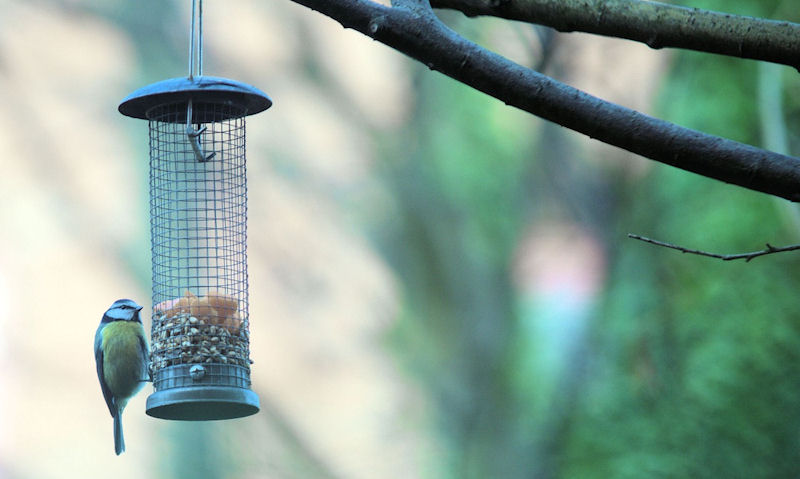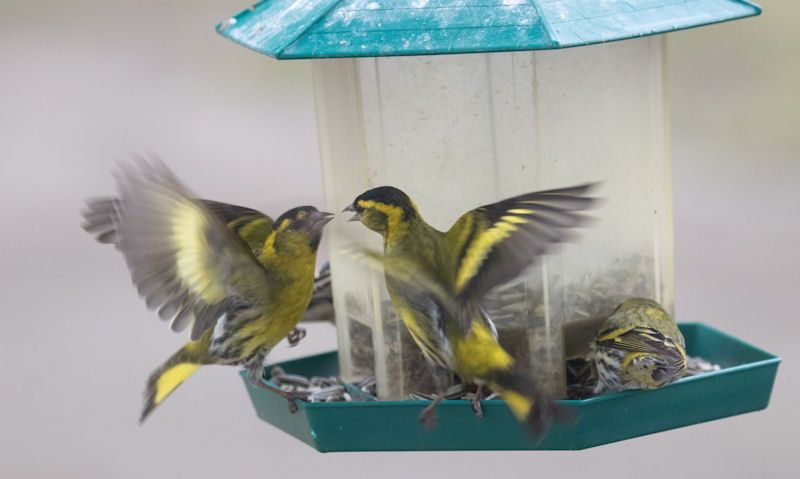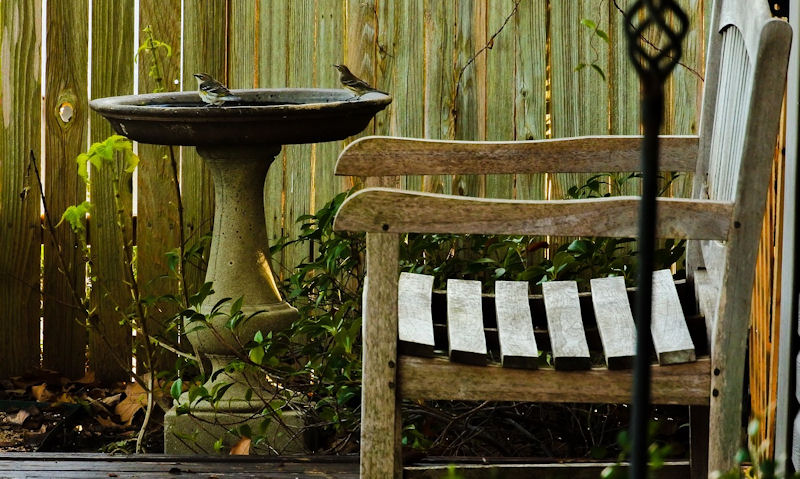Should bird feeders be in the sun or shade
Depending on the time of year, you can see benefits to locating bird feeders under the shade, as intense heat can speed up germination in bird food much sooner.
Its not necessary to put bird feeders in the shade if the weather is hot and humid. That can lead to conditions inside clear plastic tube feeders, which can lead to condensation. To continue too keep bird feeders out in the sun can benefit garden birds - as they are more easily spotted, so remember that.
Its quite a delicate balancing act as you shouldn't really be playing around with bird feeder locations, as birds come to depend on there whereabouts.
To move a bird feeding station with feeders to a shaded spot, could in fact be an area that is too secluded, and so impossible to see by garden birds.
I have to recommend you never move bird feeders as it can lead to birds not using it as they believe there's nothing there.
What you can do if your concern is bird food spoiling under intense summer heat, is to simply clean out your bird feeders more often.
Bacteria can germinate far sooner on bird feed contained within feeders under the heat, as conditions such as condensation can speed up the process. To clean out bird feeders regularly can prevent this ever happening.
Bird seeds tend to congeal under long spells of heat too, so it gives you an opportunity to clean them out long before this can happen.
Feeders are designed to be left out all year round, but so to can the bird feed that is commonly in use - as they don't need refrigerated so can last longer in warming weather.
Feeders CAN be in sun or shade
Rest assured, any one of your bird feeders can be left to hang in the sun or shade, if only to keep the food source visible to potential visitors.
But its not that what you are asking is it, concern is over the wild bird feed inside.
Well, I can say most common wild bird food can withstand the sun or the cool shade as its developed that way - or come to adopt common weather conditions in the UK.
Feed held up in bird feeders cannot withstand long spells of high temperature, over more colder conditions - so like any type of food it can go rotten.
That is why its imperative to continue to clean your bird feeder at least once a week, to quickly remove any lasting damage that can develop inside any sort of mesh feeder - but worse still a clear plastic tube feeder.
To site hanging bird feeders in the sun is OK then, but not if its hot or humid conditions.
Feed can withstand sunshine
As a rule of thumb, all types of common wild bird food for use with common garden birds can withstand the sunshine.
Much like food for use be people, long spells of un-refrigerated food can develop bacteria within 24 hours - but not so soon with wild bird food.
That is because the wild bird food you can buy in shops doesn't actually need to be refrigerated. Food for birds such as nuts, seeds or even mealworms - only need to be sealed up in their original container.
Offer a mix of common wild bird food then without worrying too much about bacteria, but there is a limit to how long food can be left out in the sun.
Not sunshine of cause in the autumn or winter time as conditions are still cold outdoors, but this refers to food left out in spring or summertime when the heat is beaming down on the bird feeding station, with long spells of humidity.
Overheated wild bird feed
While sunshine is perfectly OK most times of the year in the UK, its not so in the summer when its at its hottest.
Heat of course can lead to condensation, which for a clear plastic bird seed feeders, or any type of tube feeder - is sure to build up inside these tubes.
Brome Squirrel Buster bird feeders count for these conditions as they allow air to pass throw the bird feed mix inside the tube - but in reality this isn't going to be as effective.
Classic hanging seed bird feeders on the otherhand will guarantee to see moisture due to the heat.
What that can lead to is the seed, suet pellet or mealworms in the plastic tubes ruining far sooner out in the sun. I would then suggest for this reason to only offer up a little bit of food at any one time to avoid waist.
You may find it to be a better solution to not use tube feeders under intense heat, or at least check the feeders more often to avoid any build up of condensation.
Benefits to shaded area
I have to tell you if you place bird feeders in the shade, it is not always going to be the solution to bird feed lasting longer.
It can still be a tough, long spell of hot weather which can benefit the bird feeders if out of direct sunshine - but its the heat of the sun that is the killer of fresh bird food.
So as shade doesn't equal a cooler or cold location, it can still be just as hot as it is under direct sun.
In reality, you are probably not going to be able to miss the sun for the whole day, so you may need to get used to the idea of seeing bird feeders in the sun or shade, depending on the time of day.
Shaded areas can benefit you more in spring time, but for the summer - shaded areas continue to experience intense heat.
Benefits of the shade is seen more in spring time then, when shade is much cooler than if placing bird feeders in the sun.
Downside to shade
While I've established a shaded area can mostly benefit your bird feeders in a cooler spring with hot sunshine - or in a cooler summer where the shade is a lifesaver...
Downside to shaded areas is of course cutting off your feeders to common garden birds.
Shaded areas usually equal an area that is close too, or moved over to an tree, wall or fence to block off the sun.
What that can mean for any passers by, is the birds may not be able to spot the bird feeders. And if they arrive on a daily basis as they've come to depend on your bird feeders - then to move feeders out of nowhere can keep them away.
And then there's the issue of siting a bird feeder under a roof or tree, which can see more leafs or grit off the roof regularly sprinkle over the food.
Sun or shade conclusion
Firstly, you must know to move your bird feeding station or bird table to a shaded location suddenly, can see wild birds go without as feeders cannot be found.
But to move the bird feeders into a new shaded area permanently can certainly be better solution.
However, to move bird feeders to a temporary or permanent shaded location in the garden is not always going do what you expect it to do...
Too keep the wild bird food cool in the shade because its out of the intense sunshine.
Well, a shaded area can still feel very hot, or humid even - as conditions for condensation developing inside mostly clear plastic tube feeders a likely occurrence.
But as it happens, sunny conditions can be cooler still so a move might not be needed.
To really feel the benefits of cooling down bird feeders, the spring time is only the time of year a shaded area in your garden can feel colder then being in direct sunshine.


